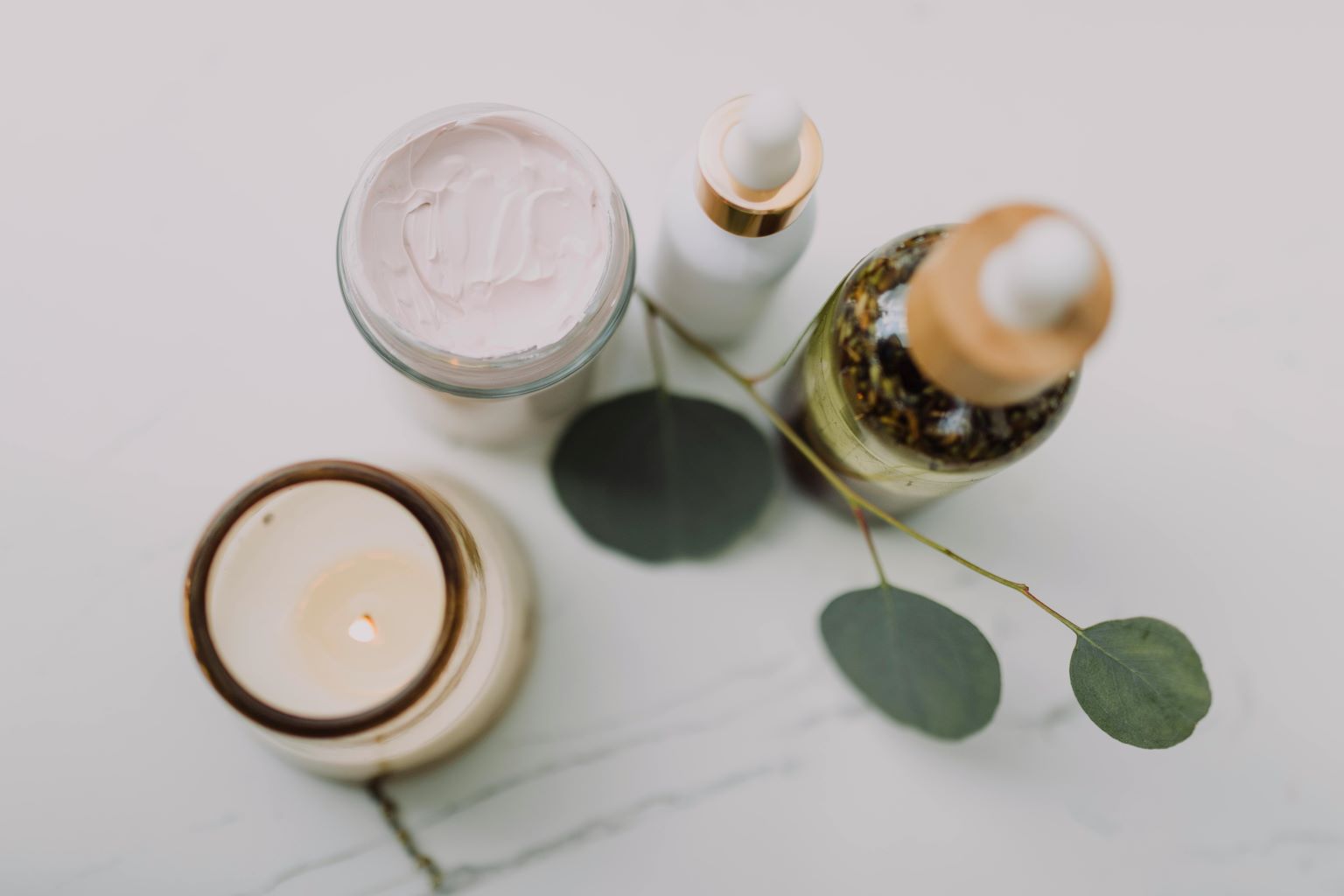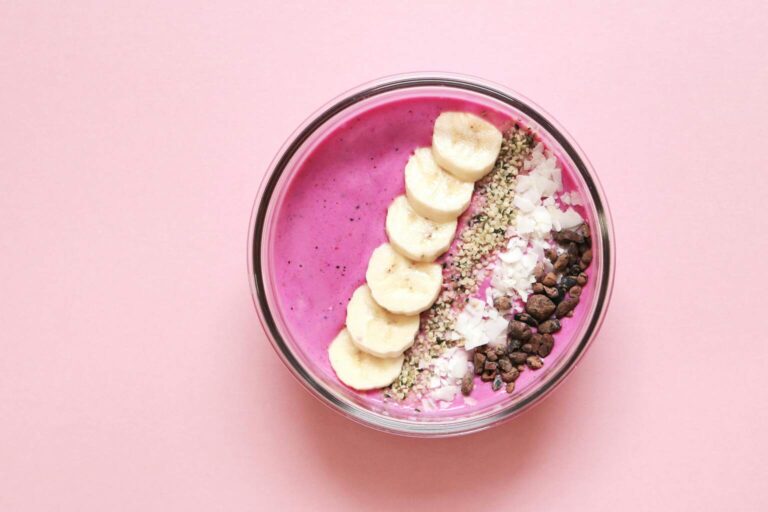If you care about your skin and overall health, the ingredients to avoid in skincare products should be a top concern for you! You may look at a fancy face wash and think it’s a dream in a bottle but little do you know about the cocktail of questionable chemicals at play..
Many everyday products harbor toxic ingredients that do more harm than good. In this article, we’ll spill the (scientifically-backed) tea on the most common culprits, explain exactly why they’re bad news for your skin (and health), and give you the know-how to decode ingredient labels like a pro—even if you’ve never passed chemistry.
Toxic Ingredients To Avoid In Skincare
When it comes to skincare, what you leave out matters just as much as what you put in. The market is overflowing with cleansers, creams, and cosmetics that promise glowing, youthful skin, but many of them contain toxic ingredients that may be secretly sabotaging your health!
These aren’t just rare chemicals found in obscure brands; they’re often lurking in your favorite face washes, moisturizers, and lotions under confusing, scientific-sounding names. To help you shop smarter and safer, we’ve compiled a definitive list of all that you should avoid, backed by research and real-world usage concerns.
| Ingredient | Found In | Common Names | Why It’s Harmful |
| Parabens | Moisturizers, shampoos, sunscreens | Methylparaben, Propylparaben | Hormone disruption, infertility, early puberty |
| SLS/SLES | Face wash, shampoo, toothpaste | Sodium Lauryl Sulfate, Sodium Laureth Sulfate | Skin irritation, dryness, allergic reactions |
| Formaldehyde & releasers | Hair products, eyelash glue | DMDM Hydantoin, Quaternium‑15 | Carcinogenic, skin allergen |
| Phthalates | Fragranced products, nail polish | DEP, DBP, DEHP | Hormonal imbalance, fertility issues |
| PEGs | Creams, moisturizers, makeup | PEG-4, PEG-100 | Carcinogen contamination risk |
| Oxybenzone | Sunscreens, lip balm | Benzophenone-3 | Hormone disruption, skin allergies |
| Fragrance/Parfum | Everything from lotion to shampoo | “Fragrance,” “Parfum” | Allergies, headaches, hormone disruption |
| Mineral Oil | Baby oil, lotions, lip balm | Paraffinum Liquidum, Petrolatum | Potential PAH contamination, pore clogging |
| Triclosan | Antibacterial face wash, toothpaste | Triclosan, TCS | Endocrine disruption, antibiotic resistance |
| Retinyl Palmitate | Sunscreen, anti-aging creams | Retinol, Retinoid ester | Tumor formation, sun sensitivity |
| BHA/BHT | Lipstick, lotions, deodorants | Butylated Hydroxyanisole | Carcinogenic, skin irritation |
| Coal Tar Dyes | Lipsticks, eye makeup | FD&C Blue 1, CI 17200 | Neurological and cancer risk |
| Siloxanes | Primers, conditioners | Cyclopentasiloxane | Hormone disruption, toxicity |
| Alcohols | Toners, aftershaves | SD Alcohol 40, Ethanol | Skin barrier damage, dryness |
| Toluene | Nail polish, hair dye | Methylbenzene, Phenylmethane | Neurological and reproductive harm |
1. Parabens (Methyl-, Ethyl-, Propyl-, Butylparaben)
- Common Names: Parabens, Alkyl esters of p-hydroxybenzoic acid.
- Found In: Moisturizers, deodorants, shampoos, conditioners, foundations, makeup removers, shaving gels, and even some sunscreens.
- What They Do: Act as preservatives to prevent mold and bacteria growth. Their job is basically to keep your products “fresh” and increase their shelf life.
- Why They’re Harmful: Parabens top the list of toxic skincare ingredients to avoid because they can mess with the hormone balance in your body. They mimic estrogen i.e the female sex hormone. In fact, according to research, you’re at the risk of infertility, breast cancer and early puberty if you use them. For men, they might lead to reduced sperm count and infertility.
2. Sodium Lauryl Sulfate (SLS) / Sodium Laureth Sulfate (SLES)
- Common Names: SLS, SLES, Sodium dodecyl sulfate, Sodium lauryl ether sulfate.
- Found In: Face washes, cleansers, bubble baths, body washes, shampoos, toothpastes, shaving creams, and even dish soaps.
- What They Do: Their main job is to create foam or lather, which we often associate with “cleanliness”. These surfactants help mix oil and water and create a bubbly texture.
- Why They’re Harmful: SLS and SLES are among the ingredients bad for skin, especially sensitive skin. Studies were conducted in Germany on 1600 patients and found that 42% experienced skin irritation when exposed to SLS, reporting symptoms like redness, itchiness, scaling, and soreness.
- Safe Brands For Women: Switch to sulfate-free face washes and cleansers from brands like Minimalist, Just Herbs, Forest Essentials, and Love Beauty & Planet.
- Safe Brands For Men: There is a wide variety of SLS-free shampoos and face washes for men too. Prefer brands like Beardo, The Man Company, Arata, and Ustraa.
3. Formaldehyde & Formaldehyde-releasing agents (DMDM Hydantoin, Quaternium‑15, Imidazolidinyl Urea)
- Common Names: DMDM Hydantoin, Quaternium‑15, Imidazolidinyl Urea, Diazolidinyl Urea, etc.
- Found In: Lotions, hair products (especially straightening treatments), eyelash glue, nail strengtheners, shampoos.
- What They Do: These ingredients kill microbes and their role is to act as preservatives by releasing small amounts of formaldehyde.
- Why They’re Harmful: According to research, formaldehyde has been classified as a human carcinogen. In fact, studies show that those who were exposed to this cosmetic toxic ingredient showed rapid tumor development. Even repeated low-level exposure can trigger skin irritation, allergic reactions, and increase overall cancer risk as per research.
4. Phthalates (DEP, DBP, DEHP)
- Common Names: Codes such as DEP, DBP, DEHP, DINP, DIBP, BBP.
- Found In: Fragranced lotions, nail polish, flexible plastics used in personal care packaging.
- What They Do: Their job is to make fragrances last longer and give flexibility to plastic materials (like bottles, nail polish hardener, and packaging).
- Why They’re Harmful: These irritating skin-care ingredients are potent endocrine disruptors. Research points out that they interfere with androgen (male hormone) function. Studies also point out that they are associated with infertility, delayed puberty, and female ovarian disruption.
5. Polyethylene Glycols (PEGs)
- Common Names: PEG‑4, PEG‑100, PEG‑7, PEG‑20, etc.
- Found In: Creams, cleansers, moisturizers, and makeup bases.
- What They Do: They help oil and water mix. They also improve texture and spreadability. They even attract moisture to the skin.
- Why They’re Harmful: PEGs are among the worst ingredients in skincare because they can be contaminated with 1,4-dioxane and ethylene oxide, known carcinogens, as per research.
- Clean Beauty Brands Avoiding PEGs: Juicy Chemistry, Ilana, Dr. Sheth’s, Plum.
- Pro Tip: Watch for “PEG-” followed by a number (e.g., PEG-100 Stearate) in your ingredient list. The higher the number, the more processed the compound. When in doubt, look for ECOCERT- or COSMOS-certified products; they usually avoid PEGs.
RELATED READING: Is Snail Mucin The Next Big Thing In Skincare? Let’s Find Out
6. Oxybenzone (Benzophenone-3)
- Common Names: PEG‑4, PEG‑100, PEG‑7, PEG‑20, etc.
- Found In: Chemical sunscreens, foundation makeup, lip balms, some skincare oils.
- What They Do: It’s basically a UV filter that absorbs harmful UVB and UVA rays and converts them into safer form. That’s why it’s a staple in sunscreen formulas.
- Why They’re Harmful: PEGs are among the worst ingredients in skincare because they can be contaminated with 1,4-dioxane and ethylene oxide, known carcinogens, as per research.
7. Synthetic Fragrance / Parfum
- Common Names: Fragrance, parfum, aroma, essential oil blend (if unspecified), or just “perfume.”
- Found In: Just about everything—face washes, lotions, cleansers, makeup, shampoos, body sprays, and moisturizers.
- What They Do: Fragrance gives beauty products their appealing scent. These are often complex mixtures of dozens or even hundreds of chemicals.
- Why They’re Harmful: They are dangerously linked to allergic reactions, headaches, hormone disruption and even respiratory issues. Even research points out that they are endocrine disruptors. So, opt for fragrance-free skincare products or those scented only with clearly listed natural essential oils in small, safe doses.
8. Mineral Oil & Petrolatum
- Common Names: Paraffinum liquidum, petroleum jelly, white mineral oil.
- Found In: Lip balms, lotions, moisturizers, cleansers, baby oils, and ointments.
- What They Do: These petroleum derivatives form a barrier to lock in moisture and create a smooth finish.
- Why They’re Harmful: Though not harmful in all grades, low-quality or unrefined mineral oil may be contaminated with polycyclic aromatic hydrocarbons (PAHs)—a group of toxins in skincare products linked to cancer, as per research.
- Safe Brands That Avoid Harmful Mineral Oils: CeraVe, Aquaphor, Plum, Earth Rhythm, Forest Essentials, and The Mom’s Co.
- Pro Tip: Look for plant-based occlusives like shea butter, squalane, or cocoa butter instead since they hydrate without the fossil fuel baggage.
9. Triclosan
- Common Names: Triclosan, TCS
- Found In: Antibacterial face washes, soaps, cleansers, toothpaste, deodorants, and acne treatments.
- What They Do: Acts as an antimicrobial agent to kill or reduce bacteria.
- Why They’re Harmful: They classify as harmful chemicals in skincare products because of their association with hormone disruption, thyroid issues, and antibiotic resistance. The U.S. FDA banned triclosan from over-the-counter antibacterial hand soaps in 2016, citing insufficient evidence of its safety compared to plain soap and water.
10. Retinyl Palmitate (Vitamin A Palmitate)
- Common Names: Retinyl acetate, Retinol, Retinoid ester
- Found In: Anti-aging creams, sunscreens, moisturizers, and serums.
- What They Do: Promotes cell turnover, smooth fine lines, and improve skin texture. It’s often marketed as a “gentler” form of retinol, appealing to those seeking the benefits of retinoids without the typical irritation.
- Why They’re Harmful: Studies point out that these chemicals in skincare products break down free radicals and can lead to skin tumors. They also have other side effects like redness, flaking, increased sun sensitivity, and irritation, which makes them unsafe sunscreen ingredients.
- Pro Tip: Never use Retinyl Palmitate during the day, reserve it for the nighttime only. And always pair it with a broad-spectrum, mineral-based sunscreen the next morning.
RELATED READING: 17 Great Protein Options For Vegans And Vegetarians
11. BHA & BHT (Butylated Hydroxyanisole, Butylated Hydroxytoluene)
- Common Names: BHA, BHT
- Found In: Lipsticks, moisturizers, lotions, deodorants.
- What They Do: Their job is to help prevent oxidation in oils and fats, thereby extending shelf life. They maintain the texture and color of beauty products.
- Why They’re Harmful: Many dermatologists recommend against these harmful chemicals in lotions, especially for individuals with sensitive or reactive skin. Research even stresses on their carcinogenic abilities. Hence, reading the labels is essential; so is supporting BHT-free reputable brands.
12. Coal Tar Dyes
- Common Names: CI 17200, FD&C Blue 1, Green 3, FD&C Red 40, and other colorants labeled with “CI” followed by a number.
- Found In: Hair dyes, mascaras, eyeliners, eyeshadows, lipsticks.
- What They Do: Skincare brands use these to create vivid hues. They’re basically synthetic color additives used to enhance visual appeal.
- Why They’re Harmful: They are controversial chemicals in skincare products because they have been linked to various health issues, including cancer, neurological problems, and skin sensitivity, as per research. Fortunately, there is ample alternate skin care available, which uses mineral-based or plant-derived colorants safer for long-term use.
13. Siloxanes
- Common Names: Cyclopentasiloxane, Cyclotetrasiloxane
- Found In: Hair conditioners, primers, facial treatments.
- What They Do: Due to their quick-drying ability, these synthetic silicone-based compounds help smoothen the skin and give products a silky, luxurious feel.
- Why They’re Harmful: They are increasingly recognized as chemicals in cosmetics that are harmful. They act as endocrine disruptors, as per research. They are also skin irritants, according to studies.
- Pro Tip: If you’re after that silky finish, switch to silicone-free primers or moisturizers made with plant-derived emollients like aloe vera, squalane, or shea butter.
14. Alcohols (Denatured Alcohol, Ethanol, Isopropyl Alcohol)
- Common Names: Alcohol Denat., SD Alcohol 40, Ethanol, Isopropyl Alcohol, Propanol
- Found In: Toners, cleansers, astringents, makeup setting sprays, aftershaves.
- What They Do: They act as penetration enhancers, allowing other ingredients to absorb more deeply into the skin. They help formulas feel lightweight and leave a matte finish, particularly appealing in oil-control products or “pore-refining” solutions.
- Why They’re Harmful: They classify as bad ingredients in moisturisers because they weaken the skin barrier, especially for sensitive and dry skin. According to research, they can cause skin rashes, irritation, burning sensations, and flakiness.
15. Toluene
- Common Names: Toluol, Methylbenzene, Phenylmethane
- Found In: Nail polishes, hair dyes, adhesives, paint removers.
- What It Does: Its role is to prevent clumping and ensure smooth application, especially in nail lacquers and hair dye formulas. It is basically a powerful solvent that helps dissolve pigments, paints, and other chemical components in cosmetic formulations.
- Why They’re Harmful: It is one of the common toxic ingredients used in skincare products because it leads to symptoms such as headaches, dizziness, fatigue, confusion, and in high concentrations, even temporary loss of coordination. Studies also point out that it leads to reproductive harm, throat irritation and difficulty in breathing.
- Pro Tip: Look for “3-free,” “5-free,” or “10-free” nail polishes. Great toluene-free brands like Zoya, Butter London, and Kure Bazaar are not only safer but also deliver stunning colors and long-lasting wear, so you can flaunt flawless nails without the toxic tradeoff.
A Guide To Correctly Reading The Labels
Navigating ingredient lists can feel like decoding a foreign language, but knowing what to look for is half the battle won. Here’s how to become label-savvy and avoid the problematic ingredients hiding in your skincare:
- Prioritize short, transparent ingredient lists
- Avoid vague terms like “fragrance” or “parfum”
- Watch for red-flag ingredients like parabens, phthalates, formaldehyde,
- Look out for “free-from” claims like paraben-free, fragrance-free
- Check certifications like EWG Verified, USDA Organic, or Made Safe
- Don’t fall for greenwashing since “Natural” or “hypoallergenic” isn’t regulated by the FDA
- Choose safe sunscreen ingredients containing non-nano zinc oxide or titanium dioxide
- For sensitive skin, avoid alcohols and sulfates
- Patch test new products especially if you’re switching to alternate skincare routines
- Research the brand for ingredient breakdowns and sourcing practices on their websites
Finally, let’s be real, we’ve all had that “Why is my skin freaking out?!” moment. If your skincare experience has ever left you with breakouts, redness, or just a feeling that something’s off, chances are your products were sneaking in some shady stuff.
This list of the 15 toxic ingredients to avoid in skincare products isn’t just another scary beauty rant; it’s your cheat sheet to finally understanding what your skin doesn’t need! After all, your skin is an organ, not a science experiment. You don’t need a PhD to shop smart; just a good eye for labels and maybe a little sass when a so-called “glow serum” is hiding petroleum byproducts. Been there, over it. So here’s to less guesswork and fewer breakouts…
Tried detoxing your routine or spotted a sneaky toxic ingredient in your favorite product? Share your experience with us, we’d love to hear your story, tips, or even your clean skincare faves!
FAQs
1. What are the most harmful ingredients in skin care products?
The list of parabens to avoid includes hormone disruptors like methylparaben and propylparaben. Additionally, phthalates are linked to reproductive issues, fragrance/parfum can trigger allergies/irritation and formaldehyde-releasing preservatives (e.g., DMDM Hydantoin) are carcinogenic.
2. What can be the natural alternatives to harmful ingredients in skincare?
Go for plant-based preservatives like rosemary extract or radish root ferment (instead of parabens). Also, opt for essential oils or unscented products (instead of synthetic fragrance). Other alternatives include aloe vera, shea butter, and jojoba oil, in place of mineral oil or petrolatum.
3. How to choose safe skin care products?
To avoid known toxic or irritating substances, read ingredient labels carefully. Look for certifications like EWG Verified, USDA Organic, or COSMOS Natural. Also, do a patch test before use and research brands known for clean formulations and alternate skincare philosophies.
What’s The Difference Between Keto And Paleo Diet? Let’s Find Out
Rare Beauty Vs Rhode: Which Celebrity Beauty Brand Is More Sustainable




